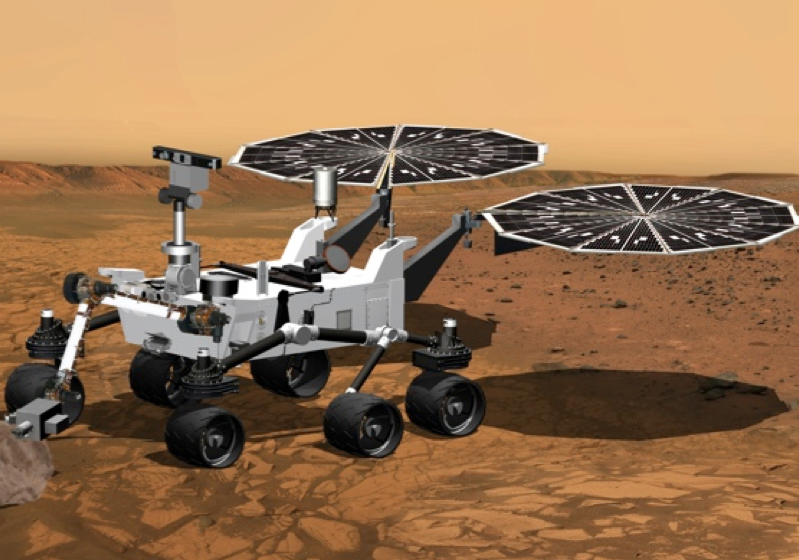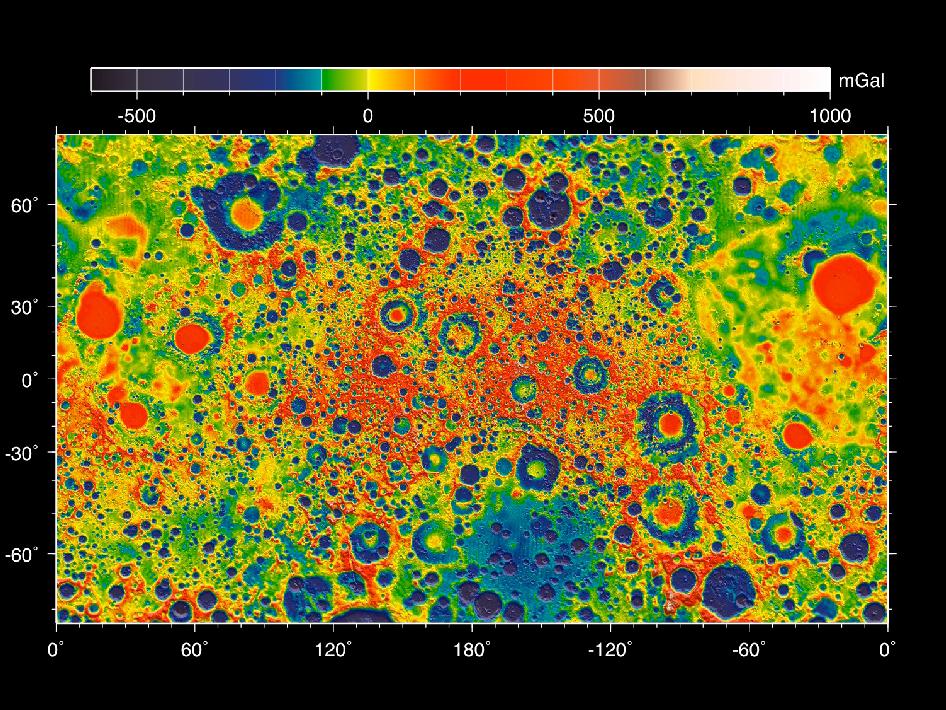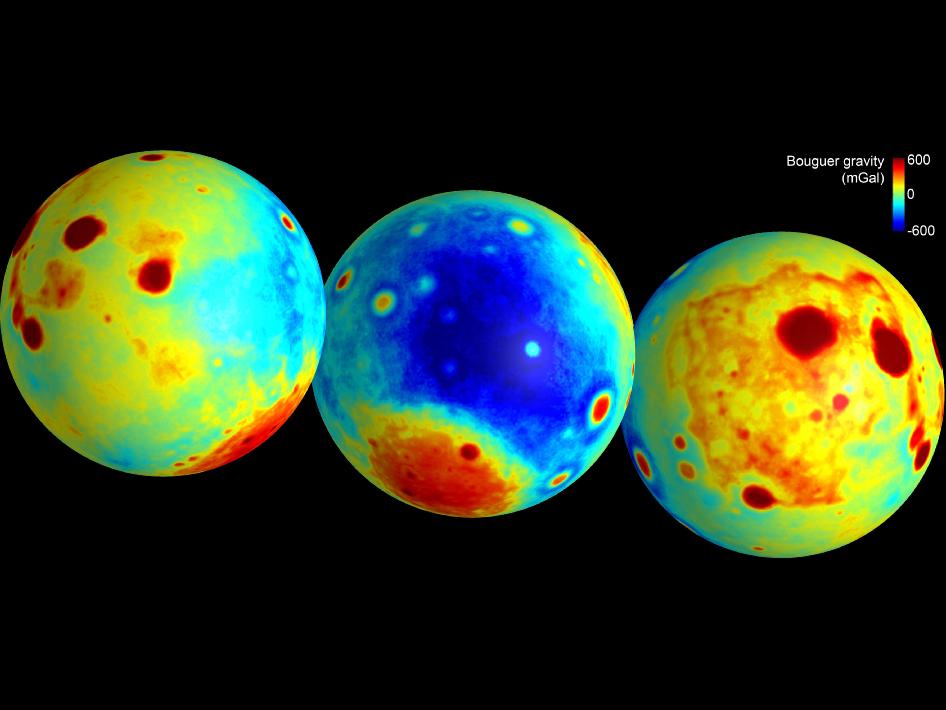Pizza the Hutt to start new franchise on Mars
- neufer
- Vacationer at Tralfamadore
- Posts: 18805
- Joined: Mon Jan 21, 2008 1:57 pm
- Location: Alexandria, Virginia
Pizza the Hutt to start new franchise on Mars
Click to play embedded YouTube video.
Art Neuendorffer
Re: Pizza the Hutt to start new franchise on Mars
Mars solar pizzas 
 Wadda they think of next
Wadda they think of next  Ordering may not be too hard, but delivery's a BITCH
Ordering may not be too hard, but delivery's a BITCH 



To find the Truth, you must go Beyond.
Re: Pizza the Hutt to start new franchise on Mars
Guaranteed at your door within 18 months or it's free
- neufer
- Vacationer at Tralfamadore
- Posts: 18805
- Joined: Mon Jan 21, 2008 1:57 pm
- Location: Alexandria, Virginia
When the moon hits your eye like a big Pizza Pie
http://arstechnica.com/science/2012/12/lunar-orbiters-reveal-a-world-shaped-by-impacts/ wrote:Lunar orbiters reveal a world shaped by impacts
- [b][i][color=#FF0000]Tectonic rifts allowed[/color] [color=#006FAF]deeper, molten [blue/green cheese][/color] [color=#FF0000]to invade the crust[/color][/i][/b] [b][i][color=#FF00FF]With a thinner crust it becomes increasingly probable that several of the largest impact events excavated through the entire crustal column and into the mantle.[/color] [size=125][color=#0000FF]GRAIL found the average thickness of the crust is 33 kilometers which is about 10 km less than previous studies[/color][/i] Image credit: NASA/ARC/MIT[/b][/size]
Largest of these probably punctured the Moon's crust.
by John Timmer, arstechnica, Dec 5 2012
<<If you're spending the money to put something in orbit around the Moon, you'll likely stuff it full of as many scientific instruments as it can fit. But now NASA has sent not one, but two spacecraft to the Moon with only a single scientific instrument. Despite the light load, the GRAIL mission turns out to have been a phenomenal success, as it's providing the clearest map of the composition of our closest neighbor. The results show a world shaped by a combination of impacts (some of which probably penetrated to the Moon's mantle) and the stretch marks of an early expansion in its size.
The GRAIL mission was modeled on NASA's earlier GRACE satellites, which were used to study the Earth. The satellite's lone instrument keeps track of the distance between the orbiting pair, which changes due to the gravitational attraction caused the terrain below. Thanks to the Moon's lack of significant atmosphere and small gravitational draw, the twin GRAIL probes were able to orbit at an average of 55km above the surface, providing details nearly three times better than any previous mapping effort.
The initial mapping mission started in March 2011 and ran for a bit over a year. It was able to map differences with a resolution of about 13km, and it obtained more than 99.99 percent of all the data it possibly could, given the resolution of its instruments. This is likely to be the clearest picture we have of the Moon for a while.
As far as the Moon is concerned, what we see is what is there. According to one of the three papers on the mission released by Science today, more than 98 percent of the local variations in gravitational attraction are the product of the surface topography. In other words, the craters and ridges that we see on the Moon's surface produce the majority of the signal picked up by GRAIL. That's uniquely high among the bodies we've looked at. The Earth, Venus, Mars, and Mercury all have much greater internal variability, in most cases the product of tectonic activity.
Although the Moon experienced some volcanic eruptions, the majority of the surface features come from impacts. In the map shown on top, these impacts leap out with high densities in the center (where material was compacted and heated) surrounded by areas of shattered, lower-density material. In fact, so many impacts have affected the crust that the material is, on average, fairly porous and relatively homogeneous. In other words, the impacts acted a bit like a giant food processor. The GRAIL data also indicates that it is probably thinner than had been predicted.
That thickness is rather significant. "With a thinner crust," the authors note, "it becomes increasingly probable that several of the largest impact events excavated through the entire crustal column and into the mantle." Their modeling of the crust suggests two impact regions have an interior thickness of roughly zero (Moscoviense and Crisium), while three others are near zero (Humboldtianum, Apollo, and Poincaré).
One of the three papers performed an analysis where the signal from the obvious surface features was eliminated. This revealed the remaining two percent, caused by internal features hidden beneath the Moon's surface. The most obvious features in the remainder were long lines, some of them extending for nearly a thousand kilometers. These features were relatively deep, starting at least 5km down and extending down to at least 70km. And they were old, as large impact craters from early in the Moon's history interrupted them.
The authors suggest the features are analogous to "dike swarms" on Earth, where tectonic rifts allowed deeper, molten material to invade the crust. Although the Moon never had much in the way of plate tectonics, it is thought the heat left over from the impact that created it created a global magma ocean underneath the crust. That would provide the molten material, but how did the fracture occur?
The authors note models of the early Moon suggest its layered structure included a relatively cool interior, molten ocean, and cooler crust. This structure should simultaneously warm the interior while cooling the outer shell, leading to an overall net expansion of the Moon. The entire radius of the Moon is predicted to have grown by somewhere between 0.6 and 4.9 kilometers within its first billion years, then later contracted. The authors think that would be sufficient to create large-scale cracks in the lunar crust, which the magma ocean then filled.
Overall, the GRAIL results tell us a lot about the early history of the Moon, and they put some constraints on models of its formation. In addition, they provide some hints about the environment of the inner Solar System shortly after its formation by telling us something about the impacts that all the bodies must have been experiencing, even though other processes gradual erased that evidence.>>
Last edited by neufer on Wed Dec 05, 2012 11:06 pm, edited 3 times in total.
Art Neuendorffer
Re: Pizza the Hutt to start new franchise on Mars
Looks like psycadelic pizza to me. To heck with waiting for pizza from Mars, it would only arrive cold anyway! I'll have some moonsa pies  Free delivery by Gravity Inc.
Free delivery by Gravity Inc. 


To find the Truth, you must go Beyond.
- neufer
- Vacationer at Tralfamadore
- Posts: 18805
- Joined: Mon Jan 21, 2008 1:57 pm
- Location: Alexandria, Virginia
Re: Pizza the Hutt to start new franchise on Mars
Click to play embedded YouTube video.
Art Neuendorffer
- neufer
- Vacationer at Tralfamadore
- Posts: 18805
- Joined: Mon Jan 21, 2008 1:57 pm
- Location: Alexandria, Virginia
An impromptu surprise for you.
http://www.universetoday.com/98820/curiosity-gets-a-sister-what-should-she-do-scientists-speak/#more-98820 wrote:Curiosity Gets a Sister – What Should She Do ? Scientists SpeakClick to play embedded YouTube video.
by Ken Kremer on December 9, 2012
<<Curiosity will apparently get a sister after all and she’ll be born in 2020 – rising from the ashes of a near death experience. The good news concerning approval of a future NASA Mars rover was announced this week by John Grunsfeld, NASA Associate Administrator for the Science Mission Directorate at NASA HQ, at the 2012 annual meeting of the AGU (American Geophysical Union) held in San Francisco.
What should Curiosity’s younger sister do? There are a multitude of great ideas, but a paucity of money in these very tough budget times – foremost among them is to gather and return the first ever Martian soil samples to Earth. What should the science goals be especially with regards to sample cache/return? So, I asked these questions to Grunsfeld and leading Mars scientists, including Steve Squyres and Ray Arvidson, the science team leaders of NASA’s wildly successful Spirit and Opportunity Mars Exploration Rovers (MER). Opportunity is nearing the 9th anniversary of her Red Planet touchdown – and is exploring the most scientifically bountiful terrain yet of her entire mission at this very moment. The design for the new Mars rover, let’s call it MSL 2, will be largely based on NASA’s hugely successful Curiosity Mars Science Laboratory (MSL) rover and the breathtaking rocket powered ‘Sky Crane’ landing architecture she so elegantly employed for touchdown barely 4 months ago on Aug. 6, 2012.
Grunsfeld and the researchers weighed in to Universe Today with their thoughts on this – “Will the 2020 Mars rover be focused on astrobiology and the search for life? Or, other goals like sample return or future human visits?” “That question will ultimately be determined by the Science Definition Team,” Grunsfeld told me. “Historically the driving question behind our Mars exploration has been ‘are we alone in the universe?’ that includes searching for signs of conditions supportive of past and/or present life on Mars.”
Steve Squyres, of Cornell University in New York, says that “sample return is the next logical step” in Mars exploration.
Remove this ad “Simple… it should collect and cache a well-chosen set of samples for eventual return to Earth,” Squyres told me. “Doing so was the clear top priority of the recent planetary decadal survey.” Squyres led the planetary decadel survey for the National Research Council (NRC) and is the scientific Principal Investigator for the Spirit and Opportunity MER rovers.
“The recently announced 2020 rover has the potential to be directly responsive to the recommendations of the recent planetary decadal survey. The highest priority large mission identified by the Mars community, and indeed by the broader planetary community, in the decadal was a rover that would collect and cache a suite of samples for eventual return to Earth. The 2020 rover, which will be based on the highly capable MSL design, clearly can have that capability if it is appropriately equipped,” Squyres elaborated. “The National Research Council planetary decadal survey documented the US planetary science community’s consensus views on future priorities for planetary exploration. The 2020 rover mission will be consistent with those priorities only if it collects and caches a suite of samples for eventual return to Earth.”
Although retrieving and returning pristine samples from the Red Planet’s surface has long been the top priority for many researchers like Squyres, that ambitious goal would also be expensive and likely require a sequential series of flights to accomplish. But it is doable and would enable scientists on Earth to utilize every one of the most powerful science instruments at their disposal to help solve the most fundamental mysteries of all, like; ‘How did the Solar System form’, ’Did life ever exist on Mars’ and “Are We Alone?’
Ray Arvidson, of Washington University in St. Louis and deputy Principal Investigator for the MER rover, said this: “For the 2020 rover I would frame the rationale and purpose as: The surface area of Mars is equivalent to the surface area of Earth’s continents. The more we look the richer the geologic record relevant to ancient climatic conditions (e.g., the rover bed gravels found by MSL and the new clay hunting grounds Opportunity is exploring). Thus another MSL class rover and payload to a new site of paleo-environmental interest would be wonderful. Imagine trying to unravel Earth’s history by exploring three locations (MER+MSL) on the continents,” Arvidson informed me. “Given the rich, complex nature of the geologic record another MSL class rover exploring a new location will definitely help us narrow down the best place to go for sample return.” “For the 2020 rover include some engineering tests that will lead to a lower risk sample return mission. This could be what measurements to do to decide on which samples to acquire and keep, could be how to drill, handle, and cache, etc.”
By reutilizing the now proven MSL designs, NASA should be able to restrain and accurately estimate the development costs while simultaneously retiring a lot of the unknown risks associated with the construction and testing of MSL 1. Grunsfeld said that the 2020 rover will cost about $1.5 Billion, plus or minus $200 million, and fits within the president’s NASA budget request for 2013 and going forward. “This mission concept fits within the current and projected Mars exploration budget, builds on the exciting discoveries of Curiosity, and takes advantage of a favorable launch opportunity,” says Grunsfeld.
The surprising decision to fund MSL 2 comes despite the Obama Administrations cancellation earlier this year of NASA’s participation in a pair of missions to Mars, jointly proposed with the European Space Agency (ESA) – the 2016 Trace Gas Orbiter and the 2018 ExoMars rover. ESA has now forged a new alliance with Russia to carry out Mars exploration. NASA will fund instruments on both spacecraft. In February 2012, the Obama Administration cut the planetary science budget by 20% and NASA was forced to withdrawn from the two joint Mars missions with ESA – as outlined earlier here and here. So, I asked Grunsfeld, “Will the 2020 mission be international with participation by ESA or Roscosmos?”
“Yes, it will be international. Details will be worked out in the planning phase,” Grunsfeld replied.
The 2020 launch window is next most favorable window after 2018 and would permit a higher weight of landed science instruments compared to Curiosity. U.S. Rep. Adam Schiff (D-CA), who represents the area that is home to NASA’s Jet Propulsion Laboratory, and has worked to reverse the budget cuts, applauded the announcement of “the new robotic science rover set to launch in 2020.” Schiff issued a statement that said, “While a 2020 launch would be favorable due to the alignment of Earth and Mars, a launch in 2018 would be even more advantageous as it would allow for an even greater payload to be launched to Mars. I will be working with NASA, the White House and my colleagues in Congress to see whether advancing the launch date is possible and what it would entail.” Now it’s up to NASA to formulate a well defined and realistic plan that the politicians will support. The specific payload and science instruments for the 2020 mission will be openly competed following established processes for instrument selection. A science definition team will be appointed to outline the scientific objectives for the mission.>>
Art Neuendorffer
- orin stepanek
- Plutopian
- Posts: 8200
- Joined: Wed Jul 27, 2005 3:41 pm
- Location: Nebraska
Re: Pizza the Hutt to start new franchise on Mars
Pizza is best when served with beer! I'd hate it if Mars is a dry planet! 


Orin
Smile today; tomorrow's another day!
Smile today; tomorrow's another day!
Re: Pizza the Hutt to start new franchise on Mars
There wouldn't be much of an 'atmosphere' in a beer/pizza joint on marsorin stepanek wrote:Pizza is best when served with beer! I'd hate it if Mars is a dry planet!

To find the Truth, you must go Beyond.
- neufer
- Vacationer at Tralfamadore
- Posts: 18805
- Joined: Mon Jan 21, 2008 1:57 pm
- Location: Alexandria, Virginia
Re: Pizza the Hutt to start new franchise on Mars
Click to play embedded YouTube video.
Beyond wrote:There wouldn't be much of an 'atmosphere'orin stepanek wrote:Pizza is best when served with beer!Ann wrote:
No Mars bars?
I'd hate it if Mars is a dry planet!

in a beer/pizza joint on mars
Art Neuendorffer
Re: Pizza the Hutt to start new franchise on Mars
ha-ha-ha, but neufer, ha-ha-ha, that's not a Mars Bar, ha-ha-ha, it's a Wars Bar 


To find the Truth, you must go Beyond.
- neufer
- Vacationer at Tralfamadore
- Posts: 18805
- Joined: Mon Jan 21, 2008 1:57 pm
- Location: Alexandria, Virginia
Re: Pizza the Hutt to start new franchise on Mars
Beyond wrote:
that's not a Mars Bar, ha-ha-ha, it's a Wars Bar

- Mars is the Roman god of War.
Art Neuendorffer
Re: Pizza the Hutt to start new franchise on Mars
Ahhh... Ok, but how did the Romans get to the planet Mars to have a barneufer wrote:Beyond wrote:
that's not a Mars Bar, ha-ha-ha, it's a Wars Bar

- Mars is the Roman god of War.
To find the Truth, you must go Beyond.
Re: Pizza the Hutt to start new franchise on Mars
Martial (A)rt's Star Wars Mars Bar, where you can have an ice-cold one, perhaps with some dry ice... that's really funny! 
Ann
Ann
Color Commentator


